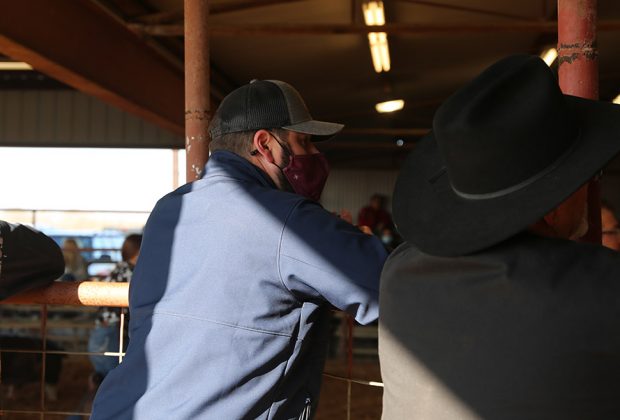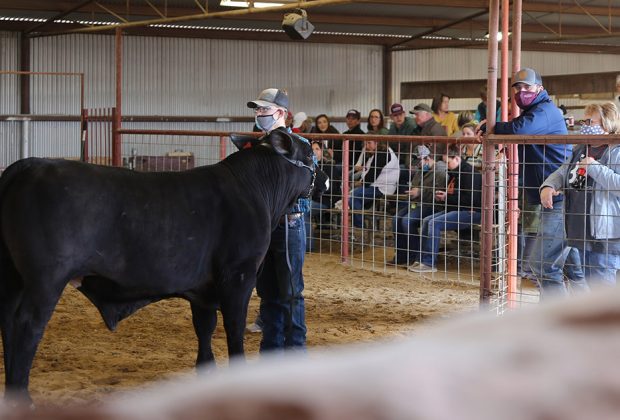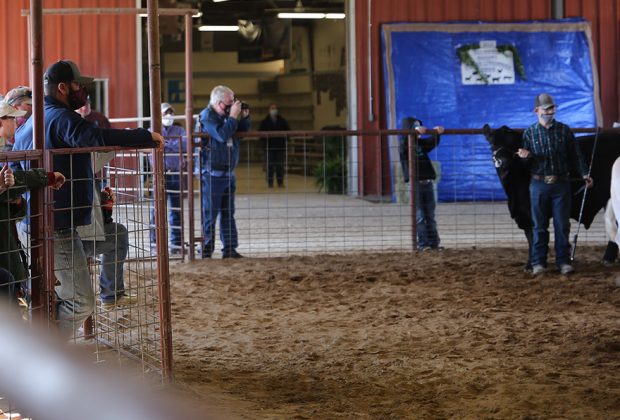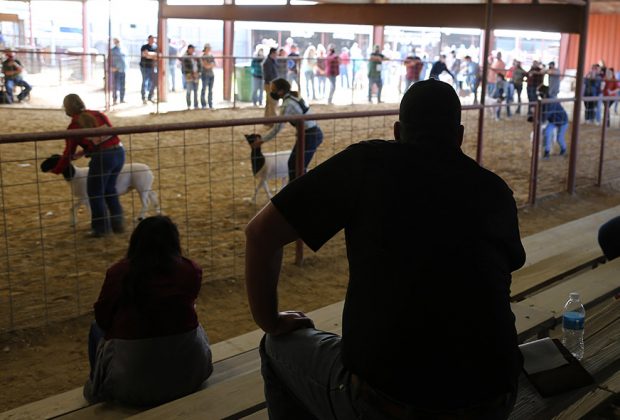For one Caldwell County Junior Livestock Show judge, it’s all about how you show
By Kristen Meriwether, Editor LPR
Hidden in the stands at the Caldwell County Junior Livestock Show (CCJLS) sits Showmanship Judge Jason Mangold. With his eagle eyes, he watches every contestant with every breed. He’s not just looking at the muscle structure of the animal, but how the kids handle their animal, how well they pay attention to the judge, and how serious they show their project.
“I’m watching all the kids. I want to see who’s paying attention to the judge, who’s talking to their friend next to them,” Mangold said in a March 5 interview with LPR. “Because if you are not paying attention to the judge, especially when you get to major shows, you can miss your chance.”
As a kid Mangold learned the stock show ropes by raising every animal his mom would let him. He learned the art of showmanship, and never looked back. For the past five years he has been the showmanship judge at the CCJLS, handing out that coveted prize that signals not only did you raise a great animal—but you know how to present it as well.
For each species Mangold said he’s looking for quality showman habits in the students. For poultry, it’s how the student presents the animal to the judge. Are they holding the bird up, or do they make the judge bend down to see their project?
For sheep, goats, and cattle, which all show with a halter, Mangold is looking at how smooth the student moves with the animal and how long it takes to set the animal up. Do they feel when the animal moves its back leg, or do they have to look down at it?
Hogs are shown with a whip, and Mangold says he looks at who is driving the hog the best. Is the contestant keeping the animal’s head up, showing all the angles of the muscle? And are they doing it while keeping their eyes on the judge?
For rabbits, which are the longest competition, its less about presenting the animal, and more about paying attention for the duration of the show. Mangold said he usually sees plenty of kids come in ready to go, but about an hour and a half in, those who are “true showers” come to the surface.
“Every so often you will find a few, a handful, that will sit there, watch the judge, pet their rabbits, make sure they are staying on the board, keeping them calm the whole time,” Mangold said. “That’s the ones I’m looking for.”
In non-COVID years Mangold says he usually gets to chat with students and ask about the animal they are showing. He will have the student talk about the parts of their animal to make sure they understand what the judge is looking for and discuss what kind of food and often they fed the animal.
“Showmanship starts the day you get the animal,” Mangold said. “That’s when you have to start training that animal.”
He said it’s obvious when he’s judging who put in the work at home by how quickly the animal sets up for the student. A properly trained animal will set up within a few seconds. If the student was more relaxed with their training schedule, it may show with an ornery animal.
“Everyone will have a different way they show,” Mangold said. “It’s about making your style look seamless, to where you look more comfortable and you are better prepared than anyone else in that ring.”
For more photos from the CCJLS click here:







